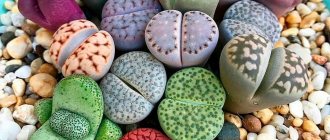12/21/2015 Category: Houseplants Author: Natalya Ivantsova
Chrysanthemum has gained popularity due to its decorative qualities, abundant flowering and unpretentiousness. Gardeners are also attracted by the variety of its shades and shapes. A chrysanthemum in a pot grows successfully; you just need to know some of the features of its cultivation.
- Preparing for landing
Selecting a location
- Soil preparation
- Regular transplant
- Watering and spraying
Description of culture
Potted chrysanthemum will decorate any home
Chrysanthemum belongs to the aster family. It is a perennial subshrub with straight stems. Its flowering period lasts from September to October. The height of the plant varies from 15 cm to 150 cm. The inflorescences can be of various shapes depending on the variety. The leaves have a gray-green color.
The number of varieties of chrysanthemums reaches 150. But not all of them are suitable for growing indoors. For this purpose, you need to select low-growing types of mulberry, Chinese, Indian or Korean chrysanthemum. These varieties are distinguished by abundant flowering and small size. The height of chrysanthemums is 15 cm - 70 cm. Inflorescences are divided into large and small types. For home cultivation, varieties such as Charm, Minimum, Cascade, Chrysanthemum, Orange Jam, Stella, Navare, Helen, Aurora, Snow Elf, Altgold are especially popular.
Preparing for landing
If you decide to plant a lovely chrysanthemum in a pot, you will need to take into account a number of key features so that the flower grows safely in your apartment. Let's look at each aspect in more detail.
Selecting a location
Chrysanthemum loves a shaded and warm place
You need to select a suitable place for a flower taking into account the following factors:
- For a chrysanthemum to feel comfortable, it must be in certain temperature conditions. The best place for it would be a window sill on the east or west side of the house.
- The plant should not be placed in the northern direction, as this will have an unfavorable effect on its development. The chrysanthemum may not even bloom.
- In summer, the temperature in the room where the flower crop grows should be within 20°C-24°C.
- With the onset of autumn, their level should be reduced to 15°C-18°C. You should not exceed the temperature.
- You should also take care of lighting. Flowering depends on this. Chrysanthemum prefers short daylight hours; prolonged exposure to ultraviolet radiation is extremely undesirable for it. It is enough for the plant to receive sunlight for eight hours, after which the crop should be covered with a paper cap.
In an excessively warm room, the flower buds dry out and the leaves turn yellow.
Soil preparation
The soil for chrysanthemums should be loose, neutral and enriched with nutrients. To prepare you will need:
- sand;
- humus;
- turf land.
All components are mixed in equal proportions until a homogeneous mass is formed. To increase the content of nutrients in the soil mixture, you can add bird droppings.
Do not use acidic soil for growing crops.
Tips and tricks for growing
Chrysanthemum is a rather unpretentious plant, but in certain cases gardeners face serious problems.
The following recommendations will help eliminate any difficulties that may arise:
- yellowed leaves - this defect occurs when agrotechnical rules for plant care are violated. In this case, it is necessary to look for the cause of this phenomenon in a lack of lighting, insufficient soil moisture, too high a room temperature, or a lack of nutrients in the substrate. It is necessary to change the conditions created for the culture;
- in another case, yellowed foliage may occur due to a fungal disease affecting the bush. The plant must be treated with appropriate insecticides;
- lack of flowering is a common problem associated with the process of crop development. The situation can be corrected by providing proper lighting to the bush. It is necessary to take into account the fact that chrysanthemum is a flower of short daylight hours, the duration of which does not exceed 8 hours. It is no coincidence that the culture feels best in the autumn. When lighting devices are used in the morning or evening, the biorhythms of the culture are disrupted. To shorten the period of illumination of the bush, it is recommended to cover it with a plastic or cardboard cap;
- Another reason for the lack of flowering may be excessive fertilizing of the crop with a composition with a prevailing nitrogen content. We must not forget that chrysanthemum needs fertilizers with a predominance of phosphorus and potassium;
- the plant quickly stretches upward - a fairly common phenomenon when cultivating chrysanthemums. To prevent this effect, it is necessary to take care of the required illumination of the flower and its proper nutrition. In addition, it is necessary to prune the plant in time, which will ensure the branching of the bush, and not its growth in height.
Indoor chrysanthemum does not require special care or complex agrotechnical measures, however, most of all, a flower grown at home needs proper attention and love from a person.
How to plant a chrysanthemum from a bouquet into a pot
Growing a chrysanthemum in a pot is quite simple. Planting material can be taken from a healthy bush in the garden. Or use a decorative flower from a given bouquet.
Regular transplant
Transplanting chrysanthemums from the garden occurs as follows:
1. Initially, you need to choose a healthy bush that has not been exposed to pests or diseases.
2. At the end of autumn, the bushes are dug up and transplanted into pots. It is important not to damage the root system.
Dig up the root and replant it in a pot
3. After flowering, prune and place the flower in a place with a temperature not exceeding +6 C. In such conditions, the chrysanthemum should spend the entire winter.
4. Cuttings are performed in early spring. To do this, they are planted in perlite or vermiculite to a depth of 2 cm.
Replanting cuttings
5. Then the cuttings are placed in a small greenhouse. If this is not possible, you can use film. Under it, you need to regularly spray the plants, and also maintain the air temperature around +21°C
From a bouquet
In order to transplant a flower from a bouquet you need to do the following:
1. The first stage is the preparation of cuttings. With chrysanthemums, you need to remove the leaves and inflorescences and pinch the tops.
We prepare cuttings
2. Then the plant is placed in a container with water, where the cutting should remain until the root system forms.
We are waiting for the roots to appear
3. For planting, you will need a pot with a diameter of at least 30 cm. The bottom of the container must have holes to drain excess moisture. First, a layer of drainage is poured into the pot. This will prevent rotting of the roots. To do this, use fine expanded clay or brick chips.
4. Then fill in a nutritious soil mixture (turf, peat and sand) that has neutral or slightly acidic properties. It is recommended to add mineral fertilizers to the soil. Before planting, the substrate is also watered abundantly.
5. Then the cuttings are placed in the soil. A distance of 30 cm should be maintained between them. The tops are periodically pinched so that the new buds acquire a spherical shape.
When to replant a chrysanthemum to another place
Any transplant is stressful for the plant. Therefore, you need to choose a period taking into account many nuances. For example, growing region, weather conditions, condition of the bush, reason for replanting. The main thing is to carry out the procedure no earlier than the moment when stable heat has been established.
It is important to take into account that the event must be carried out before the chrysanthemum begins to wilt due to a lack of nutrients. When the soil is depleted, further cultivation of the crop in the old place is impractical. The flowers become smaller, the plant loses its decorative effect.
Is it possible to replant chrysanthemums in spring?
Among the majority of flower growers, spring is considered the best time for transplantation. This is due to the fact that it is easier for the bush to endure stress and recover before the onset of cold weather. Another reason is that spring replanting is much easier than at other times of the year. After the snow melts, the soil is soft, moist, and pliable. Digging up a chrysanthemum will not be difficult. There is no danger of injuring the root system. The roots are easily removed from soft soil without tearing or damage.
The exact time of transplantation should be determined based on climatic conditions. It is necessary that the threat of return frosts pass and a stable warm temperature be established. The procedure is best performed in cloudy weather.
Is it possible to replant chrysanthemums in the fall?
The flower tolerates autumn replanting well. Many gardeners prefer to replant chrysanthemums in October for several reasons:
- In autumn, it is easier to choose a bush with the necessary parameters - height, flowering period, color of inflorescences. At this time, all chrysanthemums demonstrate their decorative properties to the fullest.
At the moment of flowering, it is easier to choose a variety for transplanting into another composition - The annuals have already bloomed. There is now room for new plants in the flower beds; you can choose the chrysanthemum variety so that the design is not disturbed.
There are certain rules for an autumn event that a gardener needs to follow:
- Complete the procedure 2-3 weeks before the onset of frost. In the northern regions, it is advisable to replant the chrysanthemum at the end of September; in the south, you can slightly delay the date until mid-October.
- Do not plant bushes in the fall that were not previously grown in a flower bed. The root system of a flower cannot fully develop in a small pot, so it remains underdeveloped and will not cope with rooting before winter.
- Choose strong and healthy chrysanthemums for replanting.
Important! Autumn replanting is suitable only for winter-hardy varieties.
Is it possible to replant a chrysanthemum during flowering?
Most often, the autumn procedure occurs at the time of flowering of the crop. Therefore, replanting bushes when they bloom is not prohibited. It is important to choose cloudy weather. The day should be cool, night temperature about 0 °C. It is important to follow all the required rules, then the plant will survive the replanting process well.
Caring for home chrysanthemum
Chrysanthemum is not too whimsical in its contents, which is why many gardeners love it. It feels great in our climatic conditions, but some features of its cultivation should still be taken into account.
Watering and spraying
Homemade chrysanthemum needs to be watered abundantly
Chrysanthemum is a moisture-loving crop. Therefore, it must be watered regularly, once every 3-5 days. The plant especially needs plenty of moisture before flowering. In this case, you need to observe the measure. The soil should always be moist, but not too soggy.
The quality of the water also influences the results. It is not advisable to draw it from the water supply. It is better to use filtered or rain water - it is softer. To determine how correctly watering is carried out, you should observe the flower.
If the plant's appearance becomes less attractive, it is experiencing a moisture deficiency.
Spraying will also be useful for chrysanthemums. This procedure is carried out for hygienic purposes and allows you to remove dust from the plant. It also makes it possible to prevent the appearance of mites that parasitize on the underside of the leaves. Spraying is carried out with cool water once a day.
Fertilizer
For full development, chrysanthemum needs feeding. But keep in mind that you don’t need to fertilize the soil all the time. The flower is fed in spring and summer. In the autumn-winter period, nutrients are not added to the soil. The plant requires organic matter and mineral elements. For this use:
- humus;
- potassium-phosphorus fertilizers;
- nitrogen substances.
Mineral components should be added with extreme caution. They are added to moist soil at the root, otherwise the plant may get burned.
Nitrogen takes the most active part in flower formation. The height of the chrysanthemum, the size of the inflorescences and leaves, as well as their color depend on its content. Nitrogen directly affects the decorative qualities of the plant.
Trimming
This technique involves removing the upper part of the cutting, due to which the growth of the crop slows down, the root system develops better, spring buds are removed and side shoots appear. What distinguishes pruning from pinching is the size of the part of the stem that is removed. Features of the process look like this:
- A sharp knife is required for pruning. They start it 10-15 days after planting the plant.
- From the stem, the length of which has reached 12 cm, the upper part with 3-4 leaves is removed.
- After pruning, the chrysanthemum is watered with a solution of nitrogen fertilizers. To do this, take 20-30 g of the active substance per 10 liters of water. In the axils of the remaining leaves, 3-4 new shoots will form in two weeks.
Pruning disrupts the natural development of the crop, so it should not be done during transplantation.
Care after flowering
Chrysanthemums are easy to care for
The duration of this period is approximately a month. Then the flower is cut to the level of the root system. Aftercare can be done in two ways:
- According to the first option, the crop is watered, then the pot is placed in a cool place where the temperature does not exceed +5°C until spring.
- The second method makes it possible to enjoy repeated flowering; it involves the following steps:
- the chrysanthemum is transplanted into a larger container;
- the plant is left in the same temperature conditions in which it was during flowering and regularly fertilized;
- fertilizing is applied every week;
After one or two months, the chrysanthemum will grow and buds will appear on it. The plant will bloom for a month. But after this, the chrysanthemum needs to be cut and placed in a cool room until spring, since the flower needs rest.
How to preserve in winter
This time for chrysanthemum is a period of rest. The flower should be kept in a room with a temperature of 3°C – 8°C. If there is a slight deviation from the recommended standards, you should not worry. Chrysanthemum can withstand light frosts down to -3°C.
Pest and disease control
The table shows the most common crop diseases, parasite attacks, and ways to get rid of the problems that arise:
| Names of infections | Treatment method |
| Powdery mildew | This lesion is manifested by the formation of an ash-gray coating on the surface of the leaf blades. The cause of the disease is most often a lack of nitrogen-potassium fertilizers in the soil. Initially, the bush should be treated with a solution based on laundry soap and soda ash (40 g of each component per 10 liters of settled water). For preventive purposes, it is recommended to spray the plant with fungicides such as Bordeaux mixture or Fundazol. |
| Septoria | The disease affects the lower leaves close to the ground. Spots with a brown tint form on the plates, as if the plant is burning. As a therapeutic measure, it is necessary to tear off all the affected foliage, then treat the bush with fungicides. |
| Septoria (rust) | The first symptom of a fungal disease is the appearance of orange powdery spots on the outside of the leaves. During pathological processes, the plant quickly weakens and there is no formation of buds. To prevent the disease, the affected foliage must be removed, the bush should be thinned for better ventilation, and the plant should be treated with a 1% solution of colloidal sulfur. During the procedure, do not allow the composition to come into contact with the shoots and plates of the flower. |
| Gray rot | Such damage to the crop resembles mold; the foliage becomes as if dusted with flour. The causative agent of the disease is a fungus. When the first signs of damage appear, the bush must be treated with fungicides: Benleit 50 SP 0.05%, Sumilex 50 NP 0.12%, Ronilan FL 0.15%, Topsin M 70 SP 0.1%. |
| Pests | |
| Spider mites and aphids | The most common pest that attacks chrysanthemums. When cobwebs appear on the leaves, the bush must be sprayed with a soapy solution, then rinsed well under a warm shower. |
| Leaf nematode | This parasite is a microscopic roundworm that gradually moves from the soil up the stem, appearing as brown spots in the occupied areas. The activity of the parasite leads to drying out of the vegetative organ and its loss. As a preventative measure, you need to properly water the soil and apply soil mulching techniques. To destroy the pest, insecticides should be used, for example, HOM or Topaz. |
| Slobbering frog (leafhopper) | The insect absorbs the chrysanthemum juice, covering the plant with a foam-like composition. The parasite can be destroyed by treating the flower with an insecticide. |
| Field/meadow bug | The appearance of insects on the bush leads to deformation of the leaf plates, flowers and buds of the plant, and a decrease in the flowering activity of the crop. The same insecticides will help get rid of the parasite. |
Indoor chrysanthemum (care at home includes prevention and control of emerging diseases), in addition to those listed in the table, has other damage to the crop associated with violations of its cultivation technology. Thus, when the soil is waterlogged, a deficiency of air in the soil may occur.
The leaves turn yellow, the roots rot, and the plant dies. Disastrous consequences for the flower occur when unbalanced fertilizing with mineral and organic fertilizers occurs, which can lead to root burns and create conditions for dangerous infections to penetrate the plant.
Transplantation and propagation
A little effort, and a beautiful chrysanthemum will appear in the house
When the root of a young shoot no longer fits in the pot, the plant must be replanted. For an adult chrysanthemum, the soil mixture is prepared from the following components:
- handfuls of bone meal;
- 3 parts garden soil;
- 1 part sand;
- 0.5 parts of dry manure;
- 1 part peat.
The process has the following features:
- Transplant the plant into a larger pot.
- As with cuttings, drainage is used.
- The day before the intended transplant, water the soil.
- A young flower needs support. When the stems get stronger, you can discard it.
- If after a certain time roots appear on the surface of the soil, the chrysanthemum should be replanted again. Otherwise, there is no need for this procedure. Although some plant growers advise replanting young crops annually, and adult flowers after 2-3 years.
Chrysanthemums are propagated in three ways:
- using seeds;
- cuttings;
- dividing the bush.
If you prefer to propagate a flower by planting seeds, you need to do the following:
- Fill the prepared container with drainage, then with soil mixture.
- Place the seeds to a depth of 1 cm. Chrysanthemum planting material is left on the surface.
- In two weeks, sprouts will appear.
- The soil must be constantly kept moist. The temperature should reach 18°C.
- When several leaves appear, the crop is planted in separate pots.
To propagate the plant by dividing the bush, you need to remove the chrysanthemum from the soil in the spring and cut the root in half. Separate parts are planted in the soil at intervals of 35x35 cm. The soil mixture should include sand, humus and turf soil (in equal proportions).
Important! Once every two to three years it is necessary to divide the main chrysanthemum bush.
Cutting method. A distinctive feature of this method of propagation is that the procedure must be carried out in warm weather, when the temperature rises to 22°C-26°C. The process has the following features:
- Initially, you need to make the lower cut under the internode, and the upper one 3 mm above the leaf with the bud.
- Prepare containers for seedlings. Nutrient soil is poured into them (composition: turf soil, river sand, peat in equal proportions). You can add a handful of bone meal or dry manure. Sand is poured on top, in a layer of 2 cm.
- Select stems 15-20 cm high and cut off the tips of the shoots that grow from their base. Remove the lower leaves.
- Dip the cuttings in a special powder - a growth stimulator. They are sold in gardening stores.
- Stick the cuttings into a picking box with moist soil so that a slight slope is formed. Expect them to take root.
Important! Deepen the cutting no more than 1.5 cm. It should only touch the sand layer.
How to replant in the fall
Autumn replanting is carried out during the flowering of the bushes. It is advisable that the day is cool and not sunny.
Important: during autumn planting, the most favorable conditions are created for the crop so that it has time to take root before the onset of cold weather.
Preparing the flowerbed
The soil for replanting is prepared in advance. The following are placed in the hole in layers:
- peat;
- vermicompost;
- compost.
Since the roots grow parallel to the soil, they should not be buried. For tall varieties, additional support is provided.
Preparation of the bush
Preparing the plant for replanting can begin before the onset of frost. At this time, the roots around the crop within a radius of 25 centimeters are cut with a shovel. This promotes the formation of young roots, which allows the bush to quickly take root in a new place.
Digging up a bush
Before digging, it is necessary to thoroughly moisten the soil around the plant. Then the bush is removed with a large lump of earth, carefully so as not to damage the roots.
Transplantation into open ground
The size of the hole for the plant should be larger than necessary. This is done so that the plant with the dug up lump of earth enters the hole. The depth of the pit is 35-40 centimeters. For rapid growth and development of the root, it is recommended to add a biostimulant to the soil.
After this, the bush is placed in a hole and covered with soil. You can compact the top with your palms. After transplanting the crop, it is recommended to cut off all the flowers so that the bush does not waste its nutrients on them.
See also
Description of terry petunia varieties, planting, cultivation and careRead
Watering
During transplantation, the crop should be watered abundantly. If the weather is dry all the time, then after 2-3 days the plant needs to be watered again.
It is important to ensure that the soil is always moist and does not dry out, since during the rooting period the plant needs a sufficient amount of moisture and nutrients.











